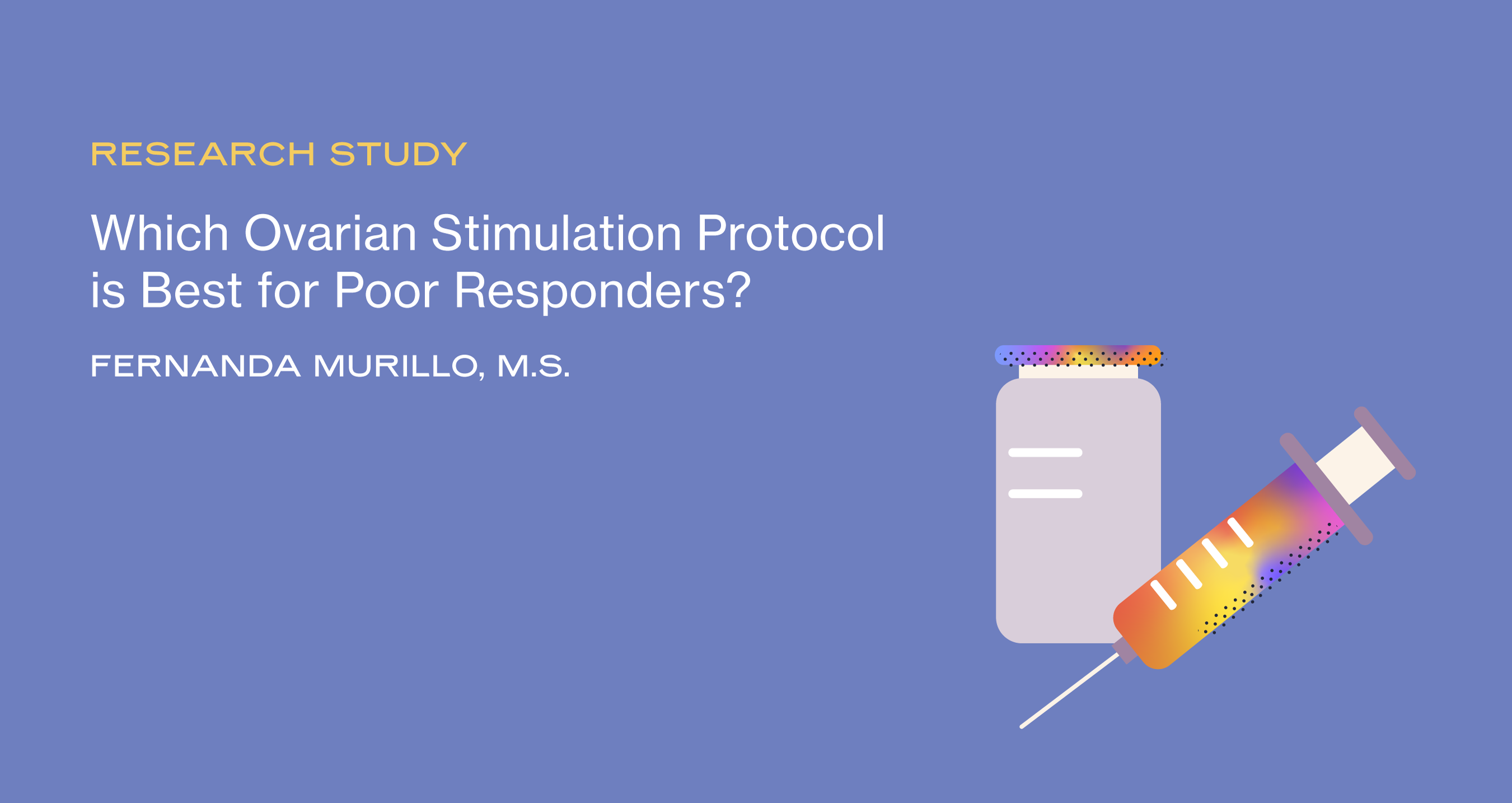Which Ovarian Stimulation Protocol Is Best for Poor Responders?

Have you been told by your clinician that you are a “poor ovarian responder?” If so, you are probably curious about how to optimize your chance of success and which is the best IVF protocol for low ovarian reserve.
Alife data scientist, Fernanda Murillo, M.S., explored this very area in her recent study published in Fertility and Sterility investigating which IVF ovarian stimulation protocol of medications was most effective for patients identified as “poor ovarian responders.”
Recently, we spoke with Fernanda to better understand the context for her research and what she discovered. For more information about ovarian stimulation IVF protocols, check out our blog post, “What Is Ovarian Stimulation?”
Interview with Alife Data Scientist Fernanda Murillo, M.S.
What does it mean to be a poor responder in IVF?
During ovarian stimulation, hormone medications are used to stimulate the ovaries to produce many eggs to increase the likelihood of a live birth. However, some patients do not respond to this treatment. These patients are generally referred to as IVF poor responders.
Among researchers, there’s not a universally agreed upon definition of a “poor responder.” Some studies use the baseline hormone tests that patients undergo before starting ovarian stimulation to identify patients with a low ovarian reserve as poor responders.
For example, follicle-stimulating hormone (FSH) levels ≤ 10 mlIU/ml on the third day of a patient’s menstrual cycle, anti-müllerian hormone (AMH) levels below .5 ng/mL, or advanced maternal age can all indicate low ovarian reserve and a potential poor response. Other studies define a poor responder as a patient who has previously undergone IVF and had limited egg production or poor fertilization rates.
In other words, sometimes the definition is based on a patient’s baseline testing before treatment, and other times it’s based on a patient’s prior response to treatment.
What’s the difference between a Flare protocol and Antagonist protocol for ovarian stimulation?
The primary difference between the Flare and Antagonist protocols are the IVF medications which are used for controlling ovulation so that a reproductive endocrinologist (RE) can retrieve the patient’s eggs at the optimal time. First, medications are used to suppress the ovaries and prevent ovulation. Then, after stimulating the follicles to grow using hormones, a different medication is used to induce ovulation at the optimal time (also known as “triggering” the patient.)
The Antagonist protocol is the most common protocol and generally thought to be effective for most patients. In this protocol, the ovaries are suppressed using an “Antagonist” medication (such as Cetrotide or Ganirelix), which is generally first administered around day 6 of the patient’s ovarian stimulation cycle and repeated daily until hCG or Lupron is given to “trigger” the patient’s eggs to mature for retrieval.
The Flare protocol is almost exclusively used with patients who are predicted to be poor responders. In this protocol, a low, daily dose of Lupron is started on day 2 of the ovarian stimulation cycle to suppress the ovaries, and continued until hCG is given to trigger the patient.
There are some key differences between the two protocols. Clinicians will often choose the Antagonist protocol because it uses fewer injections than the Flare protocol, and because you can use Lupron as a trigger. This is important because a Lupron trigger shot can reduce the risk of ovarian hyperstimulation syndrome (OHSS). Since the Flare protocol uses Lupron to suppress the ovaries, the hormone hCG has to be used for the trigger shot. But because Flare is almost exclusively used on poor responders, the RE is generally very confident that the patient is not likely to develop OHSS when they choose that protocol.
Why do some clinicians believe that a Flare protocol is better for poor responders?
The Flare protocol is often used for poor responders because it is thought that stimulating endogenous production of FSH (meaning that the medication stimulates the body’s own production of FSH) with a low dose of Lupron can increase ovarian response and result in an increased number of eggs. The initial surge in hormones resulting from giving Lupron early on in the cycle is thought to “jump-start” the follicles to help overcome the reduced ovarian response in poor responders. Some doctors believe this should lead to better ovarian stimulation with more mature follicles and more eggs for IVF. However, there is conflicting clinical evidence whether the Flare protocol is actually more effective for poor responders.
What did your research show about the difference in outcomes between the two protocols?
Our study included tens of thousands of IVF cycles reported to the Society for Assisted Reproductive Technology, and used a statistical technique called propensity score matching to compare outcomes between poor responders who were treated on the Antagonist versus Flare protocols.
In our study, we defined predicted poor responders as having a baseline AMH <0.5ng/ml (from the Bologna criteria developed by the ESHRE consensus). We also analyzed true poor responders who retrieved fewer than 4 eggs from their last ovarian stimulation cycle.
For patients going through their first IVF cycle, we found that predicted poor responders on the Antagonist protocol had, on average, slightly more eggs, fertilized eggs (2PNs), and blastocysts compared to patients on the Flare protocol. Predicted poor responders also had a similar cumulative live birth rate (CLBR) on Antagonist and slightly lower cancellation rates.
We found similar results for patients who were going through their second IVF cycle. On average, patients who were treated on Antagonist on their second cycle had a slightly improved response compared to patients who were treated with Flare, regardless of what protocol was used on the initial cycle.
Together, these results demonstrate that poor responders respond similarly to Flare and Antagonist. Because the Antagonist protocol is simpler and requires fewer injections, it may be the preferred choice for poor responders undergoing IVF.
Recent Articles
Share this
Recent Articles

Learn everything you need to know about IVF
Join the newsletter for IVF education, updates on new research, and early access to Alife products.



